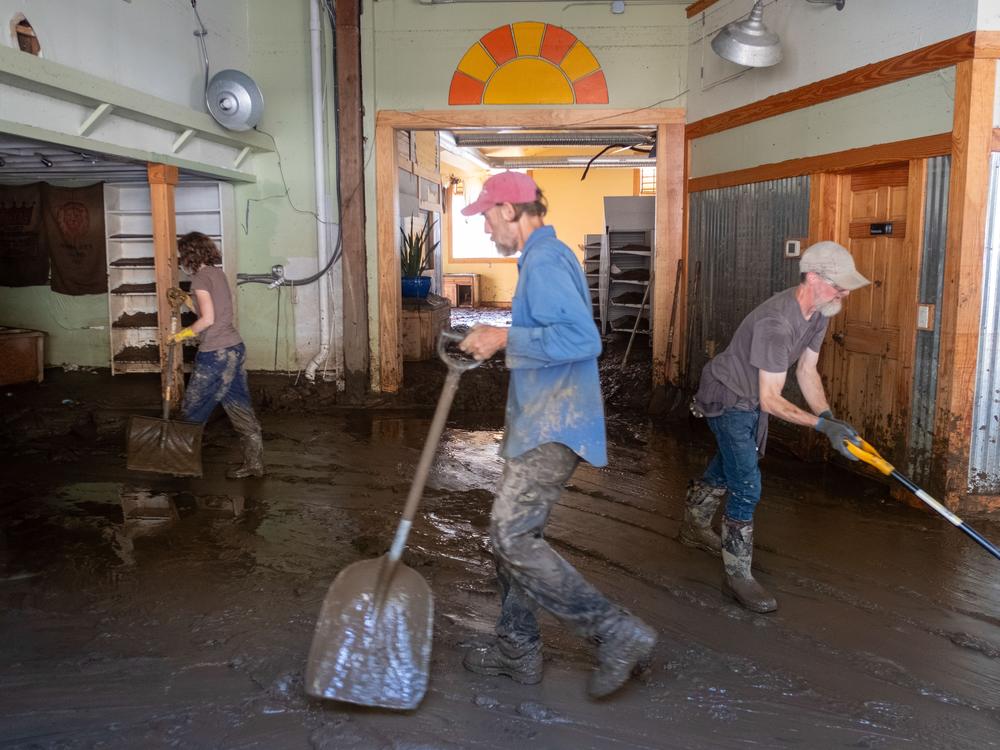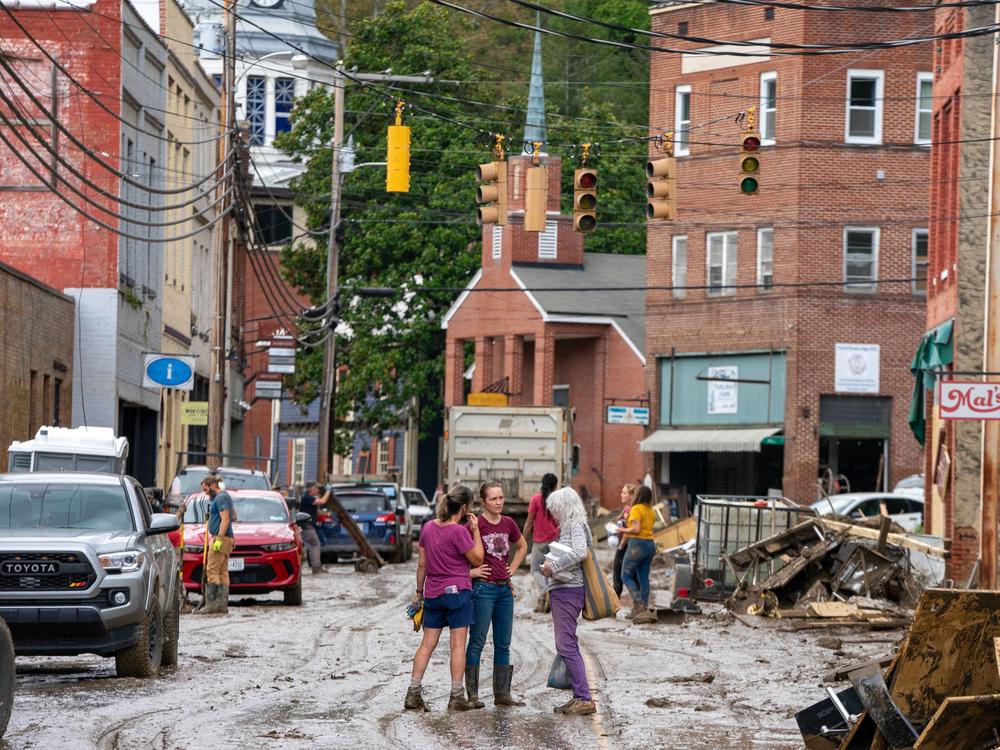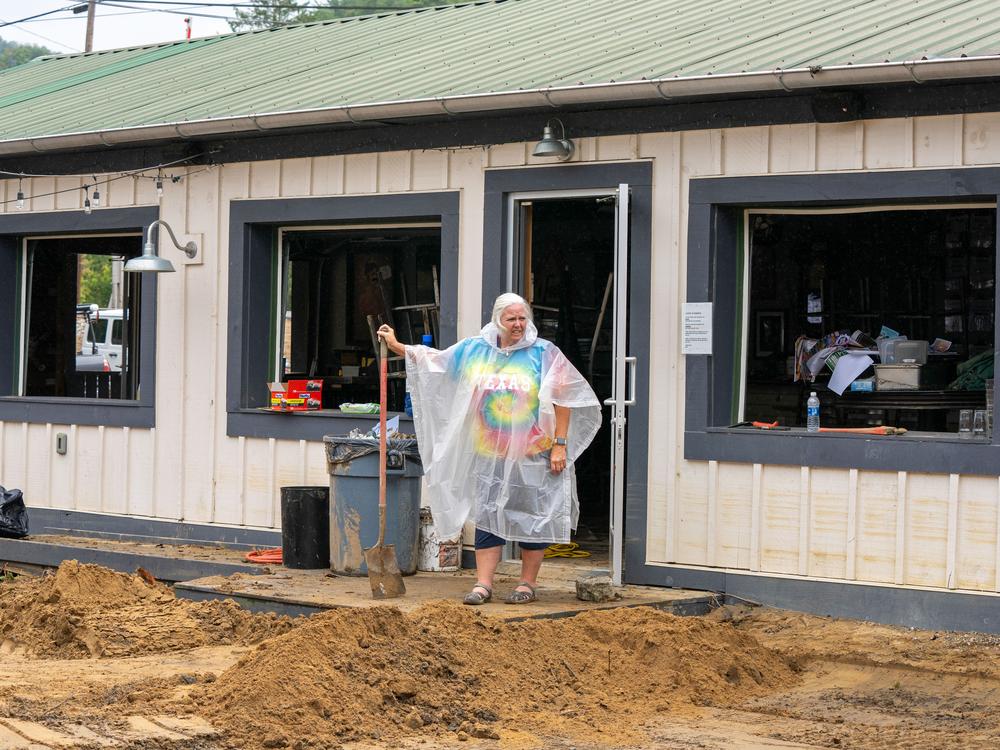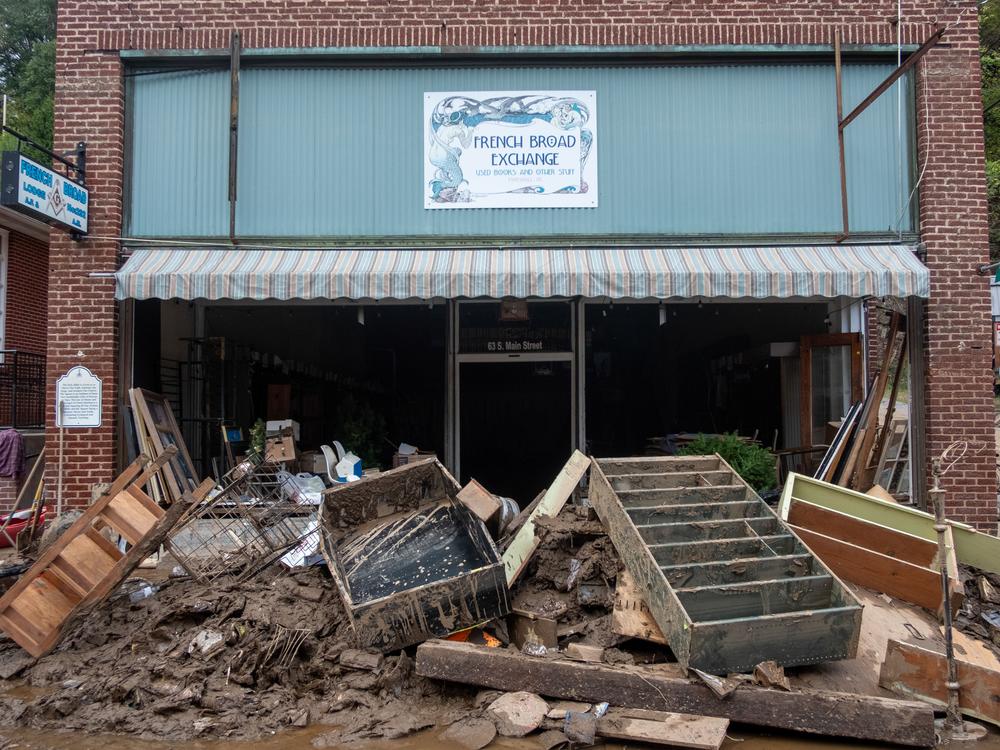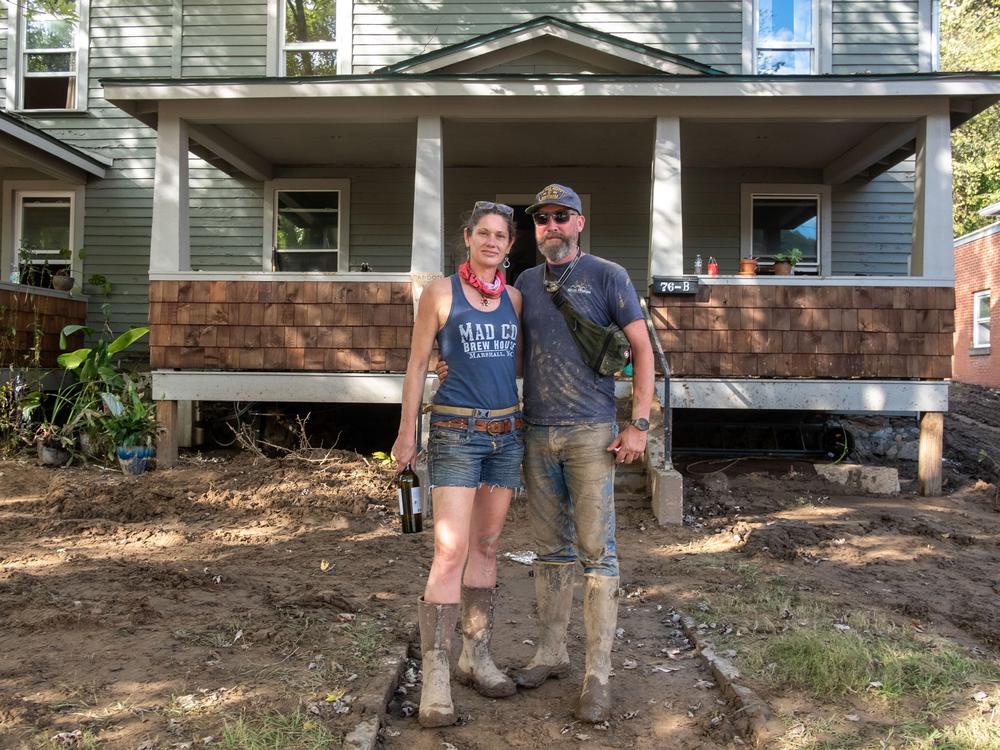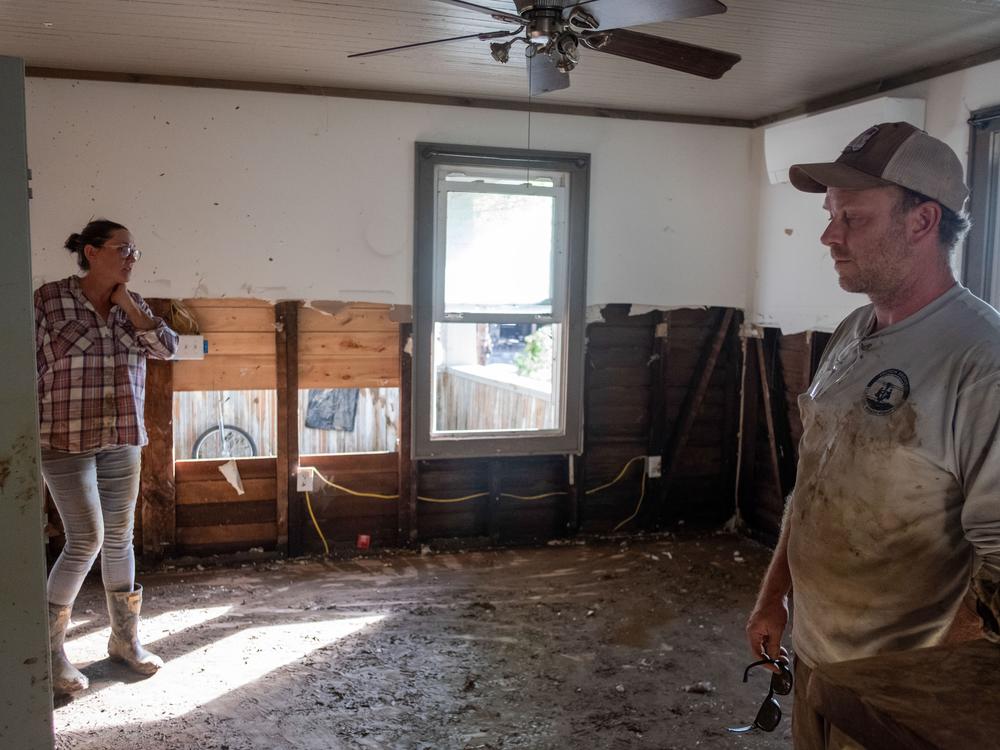Section Branding
Header Content
Shovel by shovel, N.C. towns dig out from Helene mud and debris
Primary Content
MARSHALL, N.C. – Everything in this riverside town is still covered in mud.
Lots of mud.
It slops from either side of the road graders trying to scrape it off Main Street. It fills homes, the church and storefronts. The floor of an untouched art studio looks like a rippled riverbed, which – like everything else in downtown Marshall – it was.
Bryson Effler took a break from shoveling mud out the broken window of a natural foods grocery store to sum up the collective feeling of many in western North Carolina in a single word: “Damn.”
The remnants of Hurricane Helene tore across the southeast U.S. with a fury. Four to five months worth of rain fell on western North Carolina in less than three days, cascading down the normally idyllic mountains of Southern Appalachia, killing dozens of people and flooding entire towns. Many of the hardest-hit communities, like Marshall, built along railroad tracks on the banks of the French Broad River, are rural with fewer than 1,000 residents.
“The people who built these houses, built this town, settled this area, they did some pretty tough things,” said Forrest Gilliam, a lifelong resident of Marshall and the town administrator. Now, he said, it’s up to the people living there today to do the same.
“We'll just keep working at it,” he said, with a pause. “Our ‘normal’ is going to be a little different for several years.”
About eight buildings collapsed, including a section of Town Hall. An art gallery and another building upriver, on the south side of town were swept away. Just gone. At least 50 buildings will have to be “totally gutted,” Gilliam said.
One resident, a man last seen clinging to a tree, was killed. His body still hasn’t been found. Gilliam said it’s possible that recovery efforts will find more victims farther upstream in the days to come.
More than 160 people were killed by the storm across six states and that number is likely to rise. Authorities have been reluctant to give a firm number of how many people are missing or unaccounted for, citing blocked roads and spotty cell service that could prevent people from checking in. Nearly a week since the storm passed, some residents are still completely cut off.
On Wednesday, President Joe Biden announced he had authorized the deployment of 1,000 active-duty U.S. soldiers to “support the delivery of food, water, and other critical commodities to communities impacted by Hurricane Helene.” A massive search-and-rescue effort is still ongoing.
“It’s just kind of surreal. It hasn’t really sunk in yet,” said Rhesa Edwards, taking a short break from mucking out the brewery she owns in Marshall with her husband, Brandon. The couple spent the day trying to salvage any heavy equipment they could. Very little made it out unscathed.
“Work a little, cry a little, work a little, cry a little,” said Brandon Edwards. “But we’re hanging in there.”
Down Main Street, at an intersection where a dump truck was taking on loads of storm debris, Tom Lillard said the flooding exceeded all expectations. Many residents, followed evacuation orders, leaving town before water levels peaked. But Lillard, who lives in a second-floor apartment, stayed.
He’s not sure he will in the long-term.
“With things with the climate right now, folks are scratching their heads wondering what’s a realistic thing to consider as far as what to do and what the future holds,” he said.
Gilliam, the town administrator said it was too early to know how they'll rebuild or where. But he said, "there are certain spots that we probably won't go back to, and we'll probably modify the use of for some public space like we've seen in other places where this has happened before."
Farther up the Blue Ridge mountains, in Hot Springs, near the Tennessee border, Wayne Crosby was trying to salvage what he could from his outfitting shop.
“There's no coming back from this one,” he said. Water from nearby Spring Creek drowned the store and every other on his block. The floor of the shop is ripped from the foundation, buckled and covered in debris.
Just about the only things untouched in Crosby’s shop are the photos that line a high ceiling beam—proof of the hundreds of Appalachian Trail hikers who have stopped by in the 27 years he’s been in business. He’s not sure if he’ll reopen.
“There's not a lot of undamaged real estate around here, so we'll see," he says. "It's going to be a long road."
“This is just the beginning of a multi-year build back for the mountains of western North Carolina, East Tennessee. I mean, it's going to take two, to three years before this starts to look normal again.”
